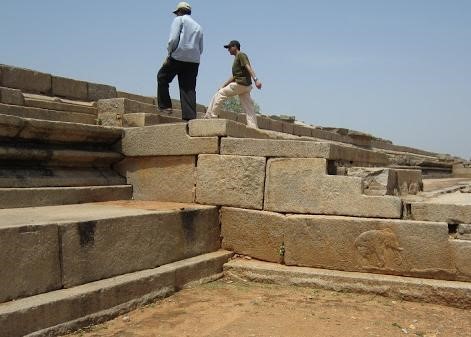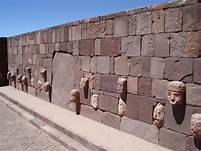Prefabrication in Ancient Period
The origin of any building material and its construction techniques is an interesting subject to study and explore, because it does not have a present and a future alone but also has a golden past. This past has many facts that explain us the growth of construction industry and also a civilization. Before the latest known advancement in construction technology, all the structures were built from natural as well as handmade and/or locally available materials. This paper is focused on prefabrication techniques used in history. Prefabrication is not a new construction methodology, which is used in present era but it has flourished during the prehistoric times. It is an innovative creation of ancient people which showed path of development for future generations. The cultural background and period of construction is easily recognized from the material used, construction techniques adopted and architectural style followed. The evolution of prefabricated construction is noticeable by strict observance of the original ancient models that continued over centuries together. Therefore, this theoretical investigation on ancient treatise brings out the techniques that have been adopted since ancient times for the construction of buildings the processes involved along with the skill
INTRODUCTION TO PREFABRICATION
Prefabrication, by definition is a process of fabricating some or all components of a unit or structure elsewhere, assembling and fitting them together on site where the structure is actually meant to locate. It might sound like a result of technological advancement in the modern world, but the fact remains that this is one of the oldest known construction methodology that has persisted over ages and is so versatile that it has been practiced continuously through history till date. The simple reason for such a diverse acceptance and adaptation of prefabrication is that this construction practice has made the construction process go faster and more efficient over ages. The process of prefabrication helps speed up the construction procedure and also results in reduction of overall cost of construction. Prefabrication is successful because it rules out the impact of variables that may affect the construction work on site. It ensures the quality of construction material, conditions and thus the quality of the construction units.
Prefabrication has been a wonder tool in the hands of engineers and designers of yesterday and still enjoys a success tale. Prefabrication as a technology has survived the test of time whether the materials used in various civilizations varied tremendously or slightly. The change in material was a result of direct influence of the socio- cultural, traditional, vernacular and climatic conditions. This construction methodology has evolved out of the need to construct faster and smarter which is why prefabrication still has and will continue to have new aspects and perceptions to be explored.
HISTORICAL BACKGROUND OF PREFABRICATION
The practice of prefabricated construction have not been evolved recently but it exists from ancient times although there have been modifications in its perception and execution as per the local material available and the environmental conditions. There has been a direct impact of the local customs, traditions and beliefs on the technique as well. The earliest known civilizations, i.e. the Stone Age, Bronze Age and Iron Age had limited construction materials and little construction experience. Thus, the Stone Age witnessed just the stone caves as shelters. Later civilizations had evolved tools like bone, stone, wood, grass and animal fibers. Thus, they were able to make the tents or the tupiqs. It was while making the tools, that the early man had realized the technique of fixing and jointing.


The world famous monument „The Stonehenge‟ was constructed in various stages. 66metres high standing stones like columns are arranged in concentric rings. Slightly Curved lintel formed uniformity with base planning. Tenon and mortise joints were used to ensure the stability of structure and to assembled the components.
The further development in architectural civilizations was the Mesopotamian civilization. This generation of architectures again displayed some practices that followed their ancestors but in a more convenient way. They used the technique of prefabrication in the form of dry wall constructions. It was derived from what Egyptians had done but the blocks were smaller, lighter and convenient to handle and fix. The important structures that they developed were the palaces, temples and ziggurats. By this time, the artisans also started using the mud- bricks, much similar to the adobe. The later constructions demonstrate the use of burnt bricks as well. This civilization, had devised an interesting technique of constructing the bridges. For this, the wooden logs were fixed together with the help long wooden wedges that matched the proportions of nails or screws. These wedges had broader heads that were fixed from the upper surface of the bridge, with narrow segments hanging downwards. This simple jointing technique not only proved useful, but also ignited many more ideas of improving the construction technology.



During the growth of the Egyptian civilization, these methodologies were developed and implemented in assembling the huge blocks of stone for constructing. The artisans had learnt to assemble and assort very huge stone pieces. The pyramids are a product of this artistic technology. These construction wonders have still kept the scientists and researchers in amuse and wonder as to how the laborers and artisans made it possible to carry and fix such large and heavy stone blocks achieving a mathematical perfection in shape and proportion as well. These pyramid constructions are nothing but prefabrication. The stone pieces still demonstrate the butterfly interlocks as a fixing detail in some of the built forms of this era.
BY :
Sakshi Aggarwal
Senior faculty-IVS SCHOOL OF DESIGN



